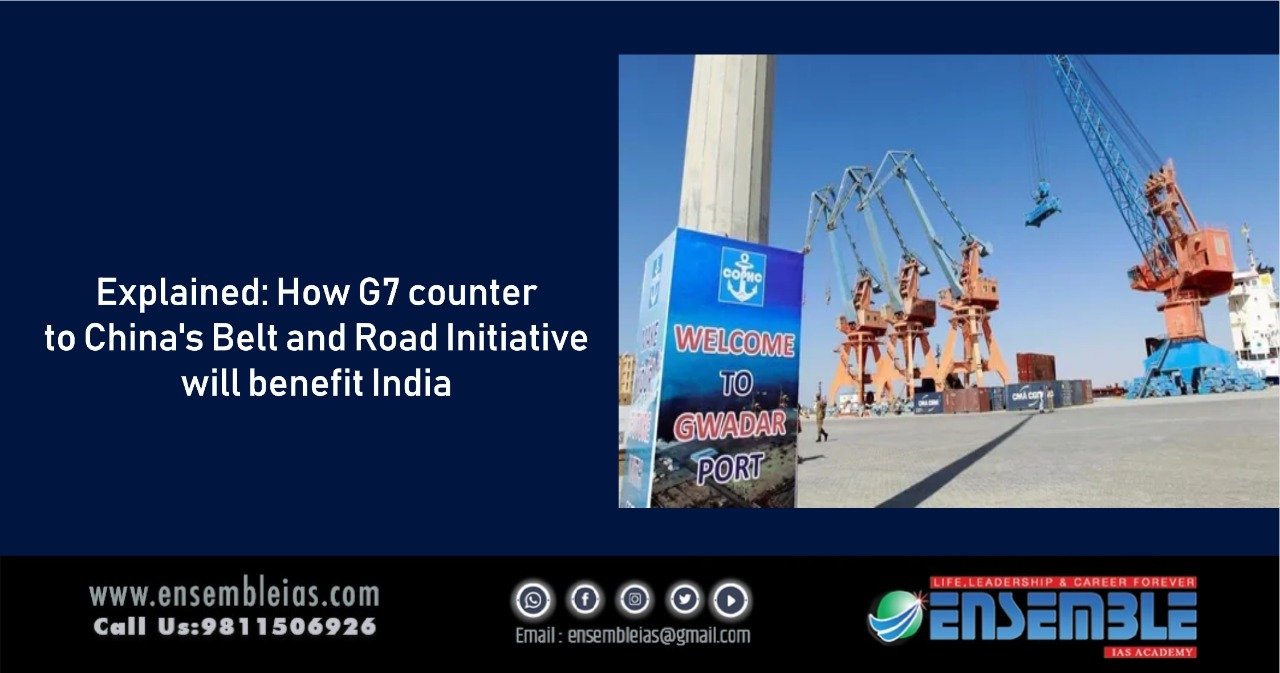Explained: How G7 counter to China’s Belt and Road Initiative will benefit India
Explained: How G7 counter to China’s Belt and Road Initiative will benefit India: More than 100 countries have signed agreements with China to cooperate in Belt and Road (BRI) projects like railways, ports, highways and other infrastructure. The G7 proposed Build Back Better World (B3W) initiative.
To buy our online courses: Click Here
The infrastructure plan is being led by United States president Joe Biden. The Build Back Better World (B3W) initiative, will provide a transparent infrastructure partnership to help narrow the $40 trillion, the leaders at the G7 summit hoped.
The seven richest economies in the world, known as G7, got in a huddle on Saturday to hammer out a plan to counter China’s growing economic clout. They arrived at a consensus and offered developing nations an infrastructure plan which can rival China’s multi-million-dollar Belt and Road Initiative or BRI.
An official of the Biden administration said that until now, the West had failed to offer a positive alternative to the “lack of transparency, poor environmental and labour standards, and coercive approach” of the Chinese government that had left many countries worse off.
What is China’s BRI?
China’s Belt and Road Initiative (BRI) scheme, which president Xi Jinping launched in 2013, involves development and investment initiatives that would stretch from Asia to Europe and beyond.
More than 100 countries have signed agreements with China to cooperate in BRI projects like railways, ports, highways and other infrastructure.
Critics say Xi’s plan to create a modern version of the ancient Silk Road trade route to link China with Asia, Europe and beyond is a vehicle for the expansion of Communist China. Beijing says such doubts betray the “imperial hangover” of many Western powers that humiliated China for centuries.
What the G7 countries are offering?
The B3W plan discussed by the US, Britain, Canada, France, Germany, Japan and Italy calls for spending hundreds of billions of dollars in collaboration with the private sector while adhering to climate standards and labour practices.
It’s designed to compete with president Xi’s BRI, which has been criticised for creating massive debt and exposing countries to undue influence by Beijing.
India’s concerns
India has expressed concerns about the China-Pakistan Economic Corridor (CPEC), the flagship project of BRI, as it traverses through Pakistan-occupied Kashmir (PoK). The massive infrastructure project connects China’s Xinjiang province with Gwadar port in Pakistan’s Balochistan province.
China has been defending the CPEC, saying it is an economic project not aimed at any third country.
India refused to join the Chinese initiative in the past and raised its voice against the BRI. Though India has officially not reacted to G7 countries’ latest plan, it is expected to be a welcome news for New Delhi.
Also Read: Ecology & economy can go together: PM Modi
According to a Refinitiv database, as of mid-last year, more than 2,600 projects at a cost of $3.7 trillion were linked to the BRI, although the Chinese foreign ministry said last June that about 20% of projects had been seriously affected by the Covid-19 pandemic.
As part of the G7 plan, the United States will work with the US Congress to supplement existing development financing and to “collectively catalyse hundreds of billions of dollars of infrastructure investment”, the White House said.




